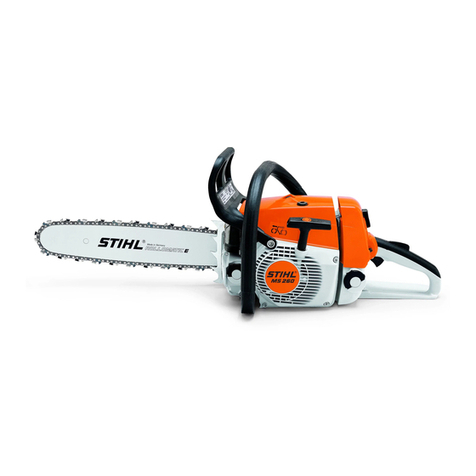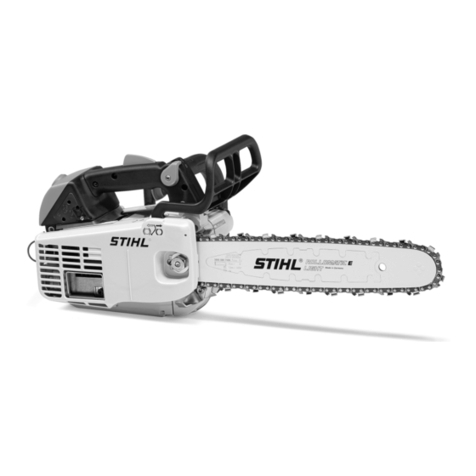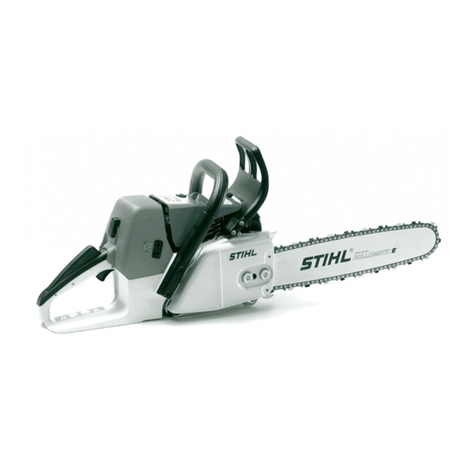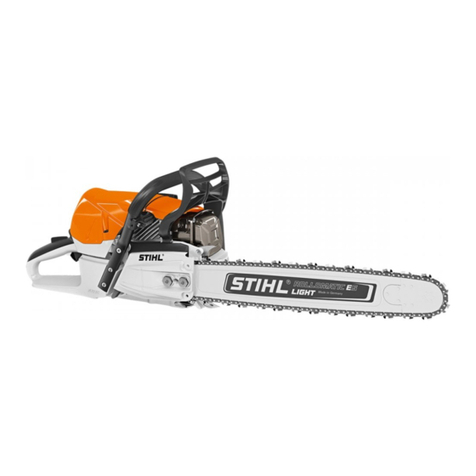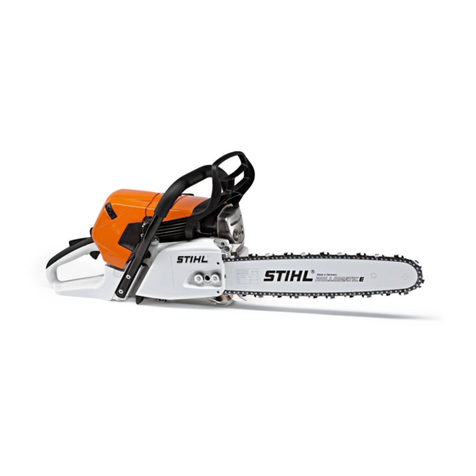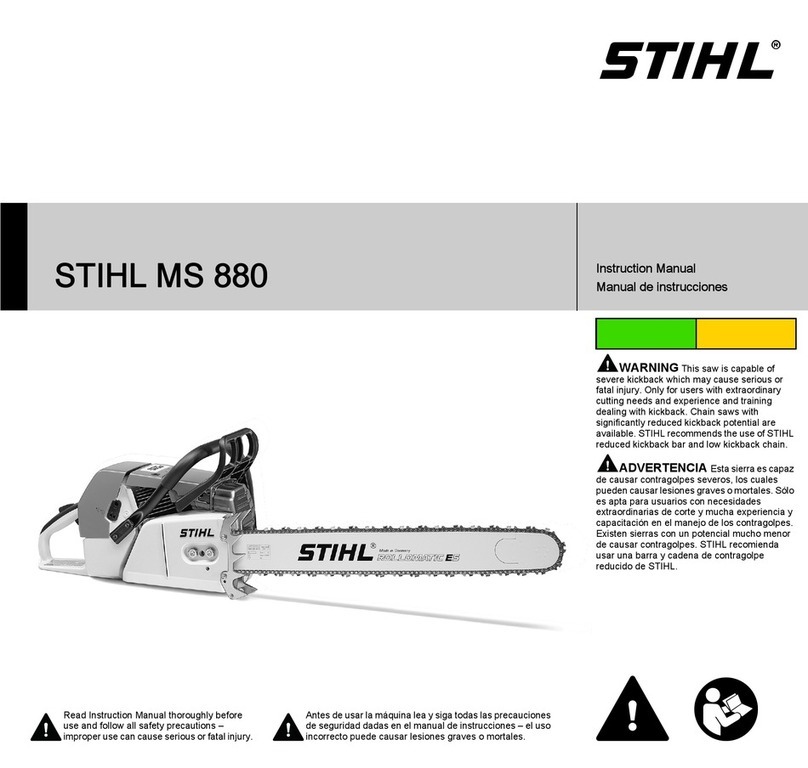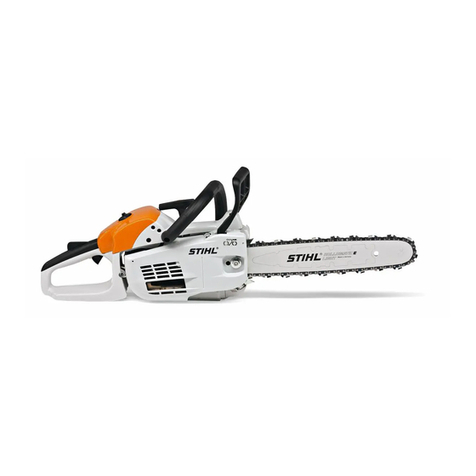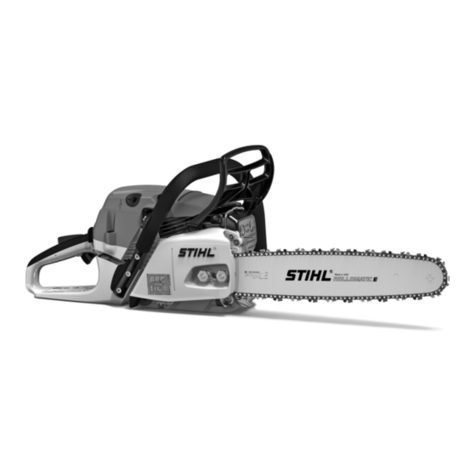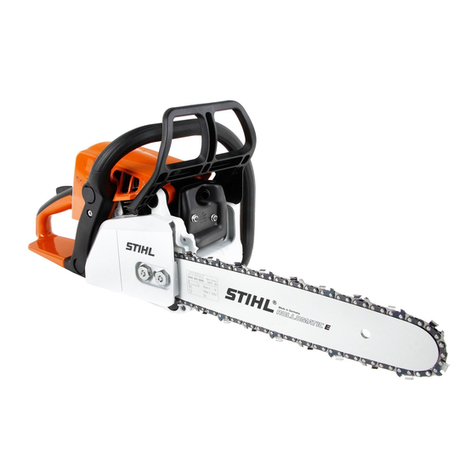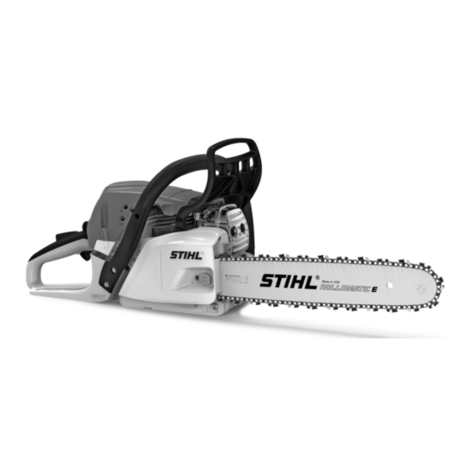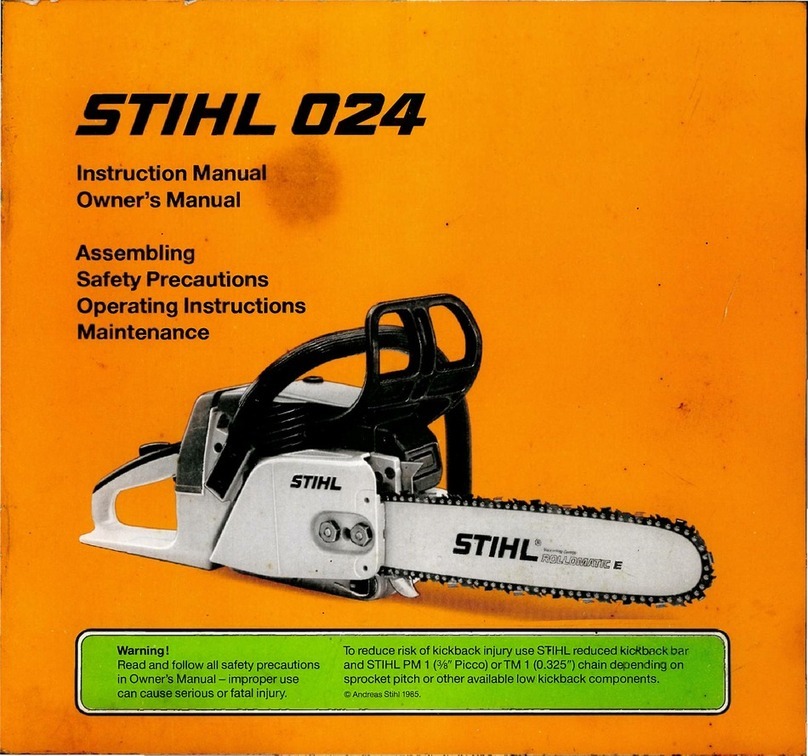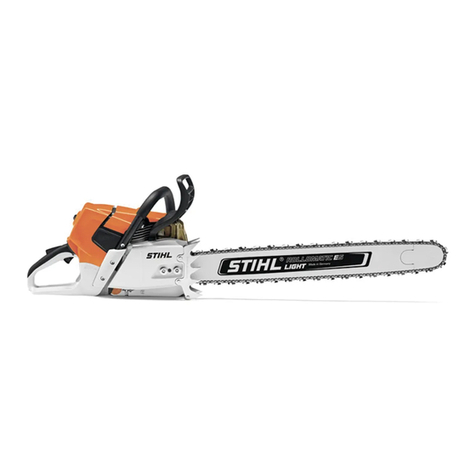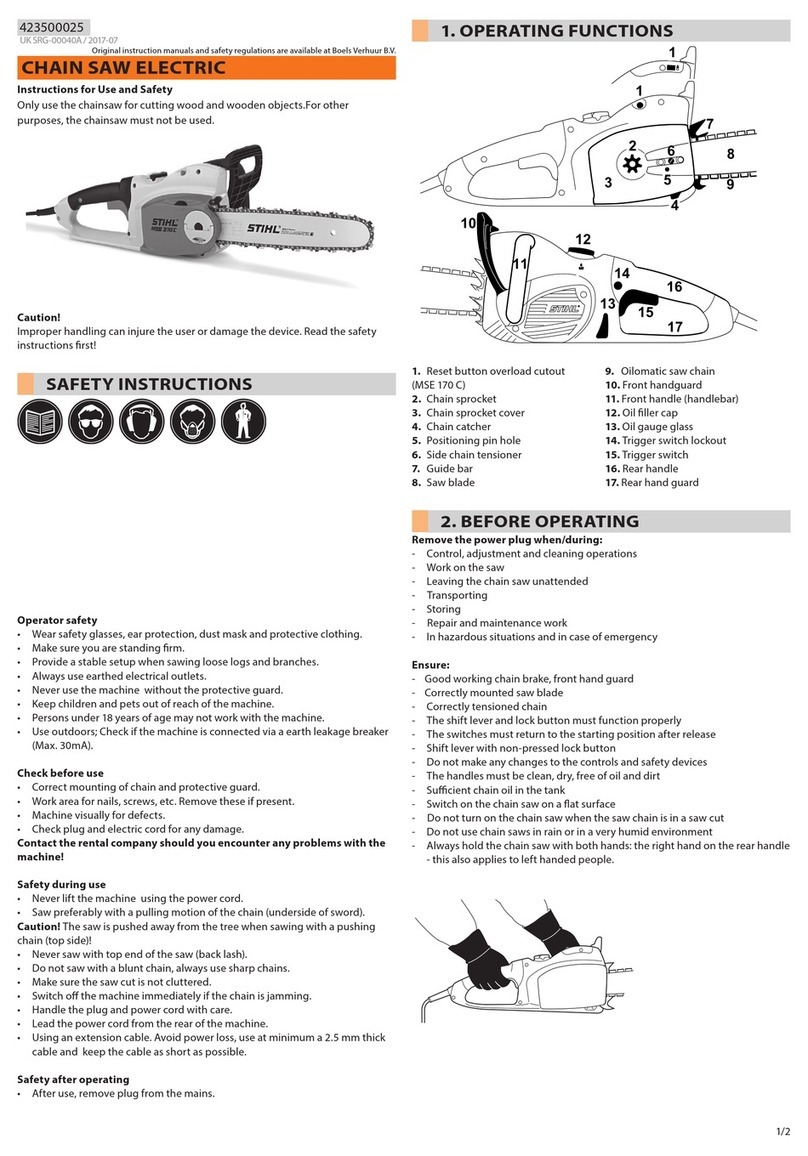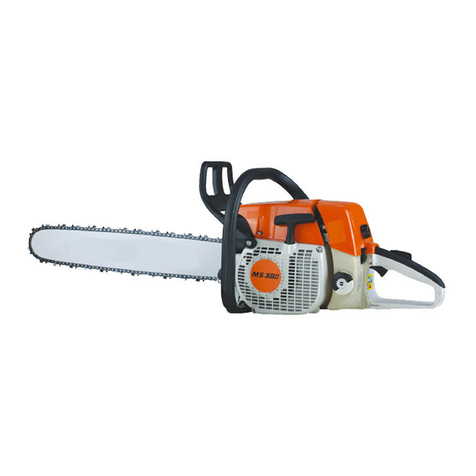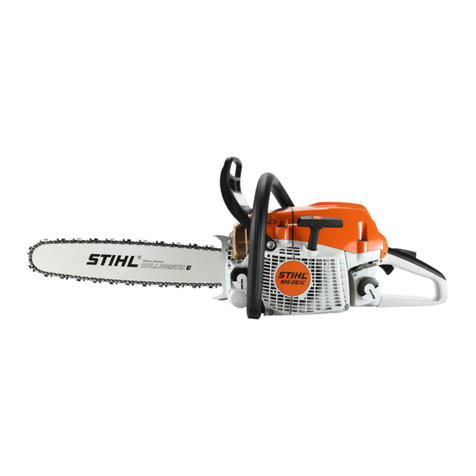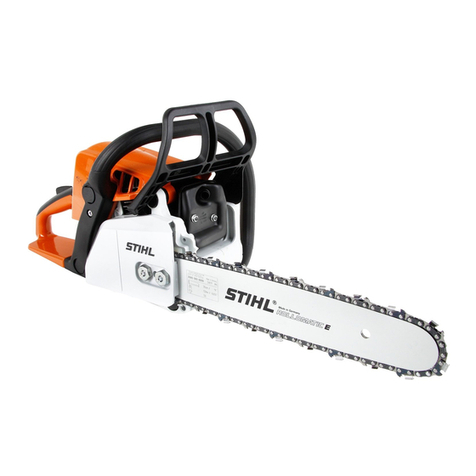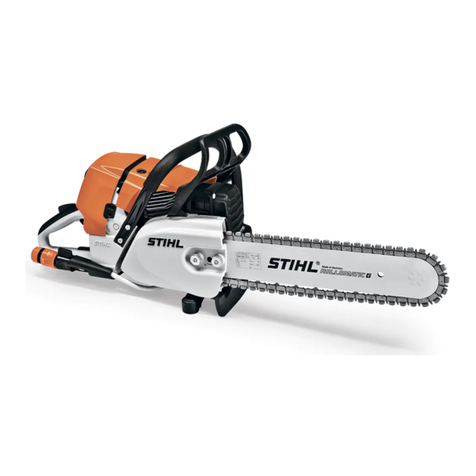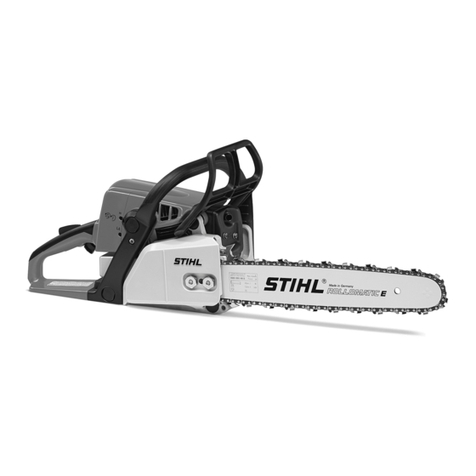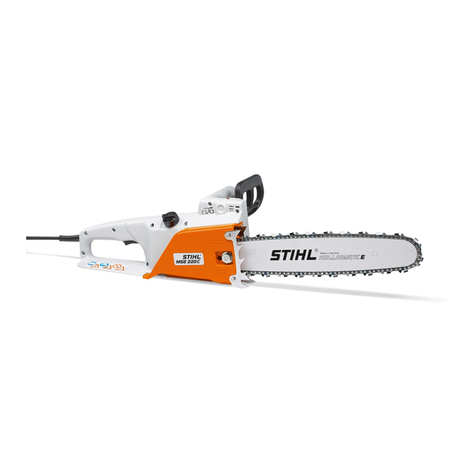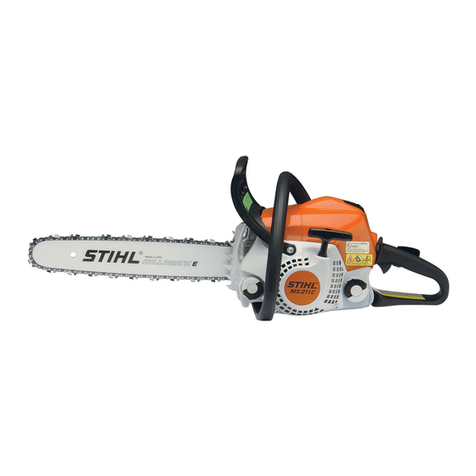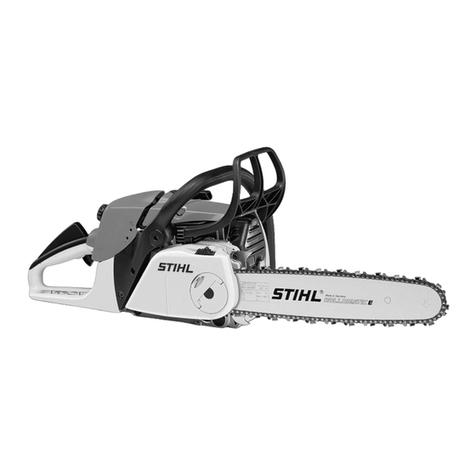
GS 461
English
5
WARNING
Never modify a concrete cutter in any
way. Only STIHL branded parts and
cutting attachments expressly approved
by STIHL for use with the specific STIHL
concrete cutter model are
recommended. Although certain other
parts or attachments may be useable
with the STIHL powerhead, their use
may, in fact, be extremely dangerous.
If this tool is subjected to unusually high
loads for which it was not designed (e.g.
heavy impact or a fall), always check
that it is in good condition before
continuing work. Check in particular that
the fuel system is tight (no leaks) and
that the controls and safety devices are
working properly. Do not continue
operating this machine if it is damaged.
In case of doubt, have it checked by your
STIHL servicing dealer.
Diamond abrasive chain
The diamond abrasive chain, guide bar
and chain sprocket must match each
other and your concrete cutter.
If chains are used that are not STIHL
branded, over-aggressive cutting while
using the tip of the bar cannot be ruled
out, i.e., when exposed leading edges of
the diamond segments hammer against
the workpiece. This can damage the
chain and other components and may
lead to increased reactive forces
(kickback). See the section entitled
"Reactive Forces."
Only use diamond abrasive chain for the
specified materials, observe diamond
abrasive chain codes.
Always cut with water, see the chapter
entitled "Sample applications."
Before fitting used diamond abrasive
chains, check that they are not cracked,
chipped or have damaged or missing
segments; check also that there are no
signs of overheating (a bluish
discoloration), which could mean an
increased risk of breakage. Never use
diamond abrasive chains that have any
of these conditions. Consult your
servicing dealer.
THE USE OF THE POWER TOOL
Transporting the Power Tool
WARNING
To reduce the risk of injury from
diamond abrasive chain contact, never
carry or transport your power tool with
the diamond abrasive chain moving.
It may be carried only in a horizontal
position. Grip the front handle in a
manner that the machine is balanced
horizontally. Keep the hot muffler away
from your body and the cutting
attachment behind you.
WARNING
Always switch off the engine, and fit the
chain guard (scabbard) over the
diamond abrasive chain and guide bar
before transporting the power tool over
long distances. When transporting it in a
vehicle, properly secure it to prevent
turnover, fuel spillage and damage to
the unit.
Fuel
Your STIHL power tool uses an oil-
gasoline mixture for fuel (see the
chapter on "Fuel" of your instruction
manual.)
WARNING
WARNING
Dust may collect on the powerhead,
especially around the carburetor, and
may absorb gasoline resulting in a risk of
fire. Clean dust from the powerhead
regularly.
Fueling Instructions
WARNING
Fuel your power tool in well-ventilated
areas, outdoors. Always shut off the
engine and allow it to cool before
refueling. Gasoline vapor pressure may
build up inside the fuel tank depending
on the fuel used, the weather conditions
and the tank venting system.
Gasoline is an extremely
flammable fuel. If spilled
and ignited by a spark or
other ignition source, it
can cause fire and seri-
ous burn injury or
property damage. Use
extreme caution when
handling gasoline or fuel
mix. Do not smoke or
bring any fire or flame
near the fuel or the power
tool. Note that combusti-
ble fuel vapor may
escape from the fuel
system.
